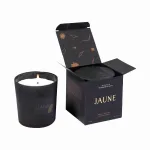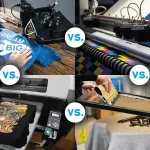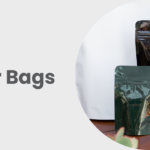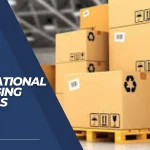Good packaging ensures the vital trust of customers in the brand. The security of goods plays a vital role in boosting the brand image. Types of packaging vary from product to product based on their delicacy. There are three levels of packaging, i.e., primary, secondary, and tertiary. The category of products defines which one of the three levels of packaging is suitable.
Primary Level of Packaging
This level of packaging comes in direct contact with the actual item. At times alluded to as a buyer unit. The fundamental motivation behind the primary level of packaging is to contain, safeguard as well as protect the completed item, especially against tainting. This is the primary layer containing the completed item, for example, a plastic box enclosing an entire piece of gum or the cardboard box containing the whole pack of gums. This kind of packaging is frequently expected from the end client or buyer. As well as making it more straightforward for buyers to deal with items, it makes the items look seriously engaging and can be utilized for correspondence purposes to pass printed data about the items on to customers.
This type of packaging can be made up of any material, such as glass, plastic, polythene, or cardboard, depending upon the type of product. This is because the primary level of packaging is related to the direct product. For example, the packaging material is glass, in the case of a beverage bottle. Similarly, in the case of candy, the packaging material is a plastic wrapper.
Secondary Level of Packaging
The secondary level of packaging is placed outside the primary layer of packaging to bunch a specific number of items to make a stock-keeping unit, ordinarily alluded to as a stock-keeping unit. This is suitable for more sensitive items. This kind of bundling likewise gives beneficial assurance to assist with keeping up with the respectability of the primary layer. Furthermore, it can act as a steel trailer for little shipments, making it profoundly valuable in online business. The second level of packaging is every now and again comprised of various parts (box, cushioning, separators, fortifications, sacks, paper, and so on.). It might likewise be tweaked to make an item effectively recognizable in the distribution center setting. For instance, the second layer of protection would be the layered cardboard box containing numerous cushions to prevent delicate decoration pieces from friction.
The secondary level of packaging mostly contains cardboard and plastic sheets. It also contains polythene cushions because it deals with sensitive items. Moreover, one can confuse the primary and the secondary levels of packaging with one another. For instance, retail locations frequently get shipments of a recently delivered film in a crate that serves as a presentation stand. The container fills in as optional bundling to safeguard the thing, yet it additionally fills in as retail bundling to get the customer’s attention, despite the fact that the DVD case itself is the way the film is conveyed to the shopper. Buyers will frequently see and connect with auxiliary bundling, especially assuming it follows the two-in-one transportation and advertising choices like the previously mentioned DVDs or carbonated drinks.
Tertiary Level of Packaging
Lastly, the tertiary level of packaging is suitable a mass or travel packaging. This sort of packaging is utilized to bunch more considerable amounts of Stock keeping units. This is also beneficial in moving them from one location to another (for example, from manufacturing houses to retail stores). During this stage, items are taken care of as appropriation units. This kind of packaging makes it simpler to move enormous and additionally weighty loads securely and safely. As well as forestalling harm, it thus works with the taking care of, stockpiling and transporting of merchandise. An example of tertiary bundling is a stretch-wrapped bed containing several cardboard boxes (optional bundling) to empower proficient item transportation. The packaging material contains plastic sheets and cardboard boxes because a large number of items have to be shipped.
Shoppers for the most part don’t see tertiary bundling. Since it’s frequently utilized just to add one more layer of insurance to the optional bundling. Furthermore, to gather bigger shipments for capacity and simple recovery of SKUs.








